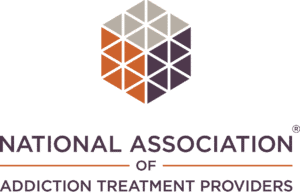Cocaine Addiction Facts and Statistics
Cocaine addiction occurs because this drug is a powerful stimulant, affecting your brain’s neurotransmitters when you use it. We tend not to think of cocaine as addictive. Unfortunately, people often develop addictions to this drug, affecting their physical and mental health and well-being.
- Cocaine is an illicit drug with few other legitimate uses.
- Most cocaine is a white crystal powder with a fine consistency.
- Drug dealers will mix it with other substances like cornstarch to increase profits.
- Cocaine is increasingly being combined with fentanyl, which is a highly potent opioid responsible for many overdose deaths.
- If someone buys illegal cocaine and doesn’t realize it has a synthetic opioid like fentanyl, it can be fatal.
- Most people use cocaine by snorting it. The drug is also dissolved and injected directly into the user’s bloodstream.
- An injectable combination of cocaine and heroin is a Speedball, which is also somewhat common.
- Freebase cocaine is smoked. The user heats a rock crystal that produces vapors, inhaling those directly into their lungs. This particular form of cocaine is called crack.
Cocaine Effects
When someone uses cocaine, there’s an increase in dopamine levels in their brain. Dopamine is a natural chemical messenger, and it creates a euphoric high and rush of energy. Dopamine especially affects the areas of the brain controlling reward and movement.
Typically, dopamine recycles back into the cell that initially releases it. The recycling effect turns off the signal occurring between nerve cells. Since cocaine prevents the recycling of dopamine, large amounts build up in the space between nerve cells. This buildup stops normal communication.
There is a flood of dopamine in the reward circuit. The stimulation of the reward circuit reinforces behaviors of drug-taking. Then, as someone continues to use the drug, their reward circuit adapts. They’re no longer as sensitive to the effects of the drug as they once were. Someone who’s adapted may take doses more frequently or use larger amounts to feel the same high.
Signs of Cocaine Addiction
When someone uses cocaine, it doesn’t automatically mean they’re addicted. As with other substances, some people use stimulants and don’t develop an addiction. For other people, addiction can occur relatively quickly. Factors that influence the development of a substance use disorder include genetics and family history, environment, and mental health.
The longer and more often someone uses it, the more likely an addiction develops, and the more apparent the signs of cocaine abuse can become.
Short-term effects of using this nervous system stimulant include:
- Excitement
- Raised body temperature
- Being more alert
- Overconfidence
- Being social or talkative
- Increased heart rate
- Dilated pupils
- Muscle twitches
- Staying awake for long periods
- Loss of appetite
- Paranoia
- Irritability or aggression
- Violent behavior
- Mood swings
Negative physical symptoms related to health include:
- Nausea
- Insomnia
- High blood pressure
- Headaches
- Confusion
- Seizures
- Sweating
- Heart problems
- Irregular heartbeat
- Risk of overdose
The longer and more frequently someone uses the substance, the more likely severe side effects are to develop. For example, over time, abusing cocaine can affect the brain, heart, kidneys, lungs, and GI system.
Specific long-term effects of use may include:
- Heart attack/cardiac arrest
- Strokes
- Cardiac arrhythmia
- Permanent lung damage
- Perforated nasal cavities
- Decreases in sexual function
- Perforation of the intestines and stomach
- Ulcers
- Rhabdomyolysis
When cocaine addiction symptoms occur, a person is no longer capable of stopping independently. They often need professional treatment to stop.
Cocaine use disorders range from mild to severe, and diagnosis is determined by the effects and consequences the drug has on the user’s life.
Cocaine addiction symptoms include:
- Continuing to use the drug even when there are known negative effects associated with it.
- Prioritizing using the substance or recovering from it.
- Forgoing other interests or responsibilities to use drugs.
- Being unable to stop, even when you want to.
- Unsuccessful attempts to cut down or quit altogether.
- Problems at school or work
- Loss of motivation
- Neglecting hygiene or appearance
- Financial problems, especially due to spending a lot of money to get the substance
- Obsessing over the next time you get to use the drug or maintaining a steady supply
- Developing a tolerance and needing more to get high
- Stealing or lying to get the drug or use it
- Compulsive drug use that you aren’t able to stop
How Long Does Cocaine Stay in Your System?
Cocaine effects are short-lived compared to most other substances. The drug can stay in your system for typically one to four days, although detection is possible up to several weeks after using it.
When you take coke, the effects occur fast and hard. If you snort it or put it on your gums, the effects begin within one to three minutes. When you inject or smoke it, you may feel the effects instantaneously.
The high from coke use may last 15 to 30 minutes if you snort it. Smoking it or injecting it may lead to a high lasting 10 to 20 minutes.
Some people feel the effects for as long as an hour.
- The detection window may be up to four days in a urine test.
- In blood, detection times can be up to two days.
- Saliva detection times can be up to two days after use.
- In a hair test, detection is possible for up to three months.
Cocaine Withdrawal Symptoms
Some people, particularly long-term or heavy coke users, may experience withdrawal when they stop. Withdrawal symptoms include:
- Symptoms of anxiety or depression
- Changes in appetite
- Vivid dreams
- Sleep disturbances
- Irritability
- Problems with concentration
- Restlessness
- Lethargy
Withdrawal symptoms can occur from a few hours to a few days after the last use and tend to get better within a few days for most people.
Co-Occurring Substance Use Disorders
With coke, it’s somewhat common for people to have multiple co-occurring addictions. For example, they may have an addiction to both the stimulant drug and alcohol or opioids. Some people use cocaine to combat the negative effects of the other substance, leading to a more complex addiction.
Getting Help for Cocaine Addiction in the San Francisco Area
Cocaine addiction symptoms are similar to the symptoms of addiction to other substances. The mental and physical health effects of an ongoing addiction to cocaine can be devastating or deadly. There are treatment programs available.
A treatment program should be individualized, with a custom treatment plan for your needs. Everyone is unique, as are their mental health needs, substance use history, and physical needs. We encourage you to contact a team member at Silicon Valley Recovery by calling 408-547-4089 if you’re struggling with cocaine addiction symptoms or someone you love is, so we can create a path to recovery.
FAQs
How long does it take to recover from cocaine?
Recovery from cocaine addiction varies for each individual and can depend on factors such as the length and intensity of use, personal health, and support systems. Typically, acute withdrawal symptoms may last from 1 to 2 weeks, but psychological recovery can take several months or longer. Comprehensive treatment, including therapy and support groups, often enhances recovery outcomes.
What are the characteristics of a cocaine addict?
Cocaine addicts may exhibit behavioral changes such as increased secrecy, mood swings, and a decline in responsibilities. Physical signs include weight loss, nosebleeds, and insomnia. Socially, they might withdraw from family and friends. Financial difficulties often arise due to spending on the substance, and they may show a compulsion to use cocaine despite negative consequences.
Is it possible to have a relationship with a cocaine addict?
Maintaining a relationship with a cocaine addict is challenging and requires setting boundaries, seeking support, and encouraging treatment. Prioritizing your well-being is crucial, as addiction often leads to unpredictable behavior. Open communication and understanding the complexities of addiction can help, but professional guidance is often necessary for both partners.
What medication is used for cocaine addiction?
There is currently no specific medication approved for treating cocaine addiction, but several medications are being researched for potential use. Some of these include disulfiram, modafinil, and certain anticonvulsants. These medications may help reduce cravings or manage symptoms, but behavioral therapies remain the primary treatment approach for cocaine addiction.
How many days does it take to do a detox?
The duration of a detox can vary depending on the specific detox program and individual goals. Typically, detox programs can last anywhere from 3 to 10 days. Shorter programs, around 3 to 5 days, can help jumpstart a healthier lifestyle, while longer detoxes, lasting up to 10 days, might be more suitable for a deeper reset. It’s important to consider personal health conditions and consult a healthcare professional before starting.
What is cocaine withdrawal?
Cocaine withdrawal refers to the symptoms that occur when someone who has been using cocaine regularly suddenly stops or reduces their intake. Symptoms can include fatigue, increased appetite, vivid or unpleasant dreams, insomnia, slowed thinking, and depression. The severity and duration of these symptoms can vary based on the level of dependence and the individual’s health.









